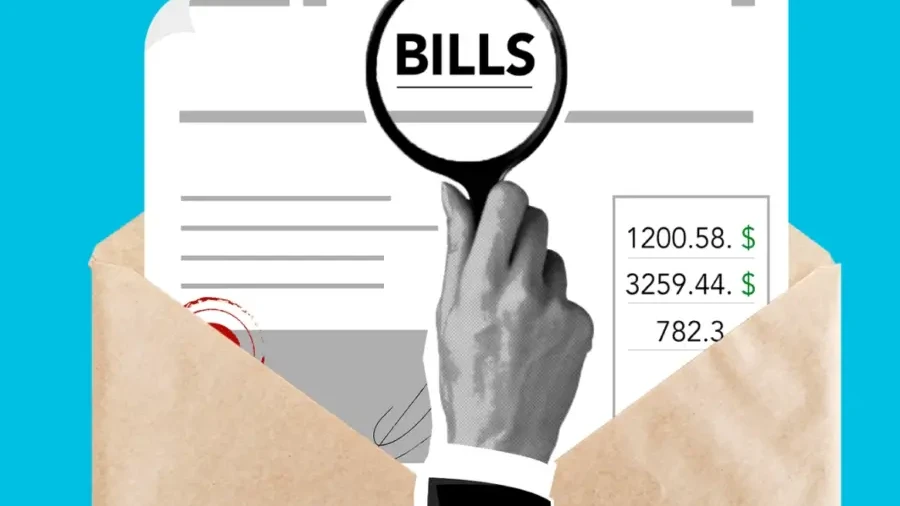As per our previous blog:
Financial abuse is a form of domestic and family violence which occurs when an abuser uses money and resources as a means to gain power, and to control their partner or family member.
While according to the Parliament of Australia, Financial Abuse of the elderly:
Involves family members in either: preserving an inheritance by not spending money on an older person’s welfare needs; or bringing forward an inheritance by using an older person’s assets for their own benefit
Although navigating a financial abuse case can often be difficult, following this guide will ensure an effective and legally sound investigation.
This paper is designed to help you understand:
- Key Documents relevant to financial abuse investigations
- Step-by-Step Investigation Process
- Cases Involving the Elderly
Here are 3 things to consider when conducting a financial abuse case.
Key Documents for Financial Abuse Investigations
Documents are critical during any investigative process. This section will highlight:
- Key documents to collect
- Document management tips
Key documents which be particularly relevant for your Financial Abuse case can be divided into the following categories:
- Medical Records
- Bank and Financial Records
- Legal Records
- Other Records
Medical Records
- Medication list
- Doctor notes
- Psychiatric evaluations
- Notes about individuals accompanying elder to appointments and their relationship
- Health insurance ID
- Disabilities Documentations
Bank and Financial Records
1. Bank Records
- Opening Documents (Signatures and other account owners)
- Deposit Items (Checks from additional accounts/assets, and Deposit Items income from Investments)
- Withdrawal Items (Signatures, cashier’s checks, and notes Withdrawal Items about purpose)
- Cancelled checks (Signatures, payees, memo details, endorsements, bank of deposit, account number)
- Transfer Details (Origin and destination accounts and account numbers)
2. Tax Statements
- Property tax statements
- Tax Returns
3. Financial Accounts
- Bank/credit union statements
- Credit/debit card statements
- Retirement Accounts (401K, TSP, IRA)
- Investment Accounts (stocks, bonds, mutual funds)
4. Sources of Income/Assets
- Government benefits (social security, veterans, assistance for needy families)
- Child support income
- Alimony income
5. Financial Obligations
- Mortgage statement
- Lease
- Utility bills (electricity, water, gas)
- Alimony payments
- Child support payments
- Aged care facilities

Legal Records
Family Documents
- Marriage License
- Divorce Papers
- Power(s) of Attorney (personal/property)
- Will
- Mortgage or Real Estate Deeds of Trust
- Vehicle Registration/Ownership papers
- ID (Passport/green card/driver’s license)
Other Records
When addressing situations of suspected financial abuse, it is important not to jump to conclusions. Regardless of the signs and whether an intervention was undertaken, it is important to document the situation. This will establish the case history and will assist in justifying timely interventions.
Document Management
Document management is critical to any investigation. Once you have gathered the above documents, it is important you manage them properly.
Consider the following tips:
1. Keep all original documents, photographs and records in one place
Because these documents contain such important and personal information, we strongly recommend that you keep all original documents, photographs and records in a safe and secure place.
2. Make a copy of both sides
We also encourage you to make a copy of these documents. Make sure to copy both sides, as important information is often printed on the backs of these documents.
3. Document dates obtained
We also suggest you document the date you collect and obtain necessary documents. This will help you track your investigation process.
Conducting Investigations
Here are important steps to consider during an investigation:
1. Establish a clear timeline including dates POA(s) were signed, suspect involvement, capacity determination, dates hospitalized, etc.
2. Summarize bank records by monthly cash flows: List inflows by source, and outflows by type or use.
3. Reconcile total inflows and outflows to the beginning and ending statement balances.
4. Compare patterns and deviations observed in bank records to timeline.
5. Write a brief narrative, including facts of the case, findings noted, references to pieces of evidence, and conclude with a summary of related charges.
Financial Abuse Cases Involving the Elderly
Australian Institute of Family Studies reports that Financial Abuse is the most common form of elderly abuse. Read our insights in Financial Abuse: What is it? to understand how Financial Abuse unfolds in the context of elderly abuse.
Based on our insights, we compiled a list of key considerations to make when handling Elderly Financial Abuse:
1. Understand the Relevant laws
Laws, terminology and processes around the power of attorney differ across states and territories. It is important to understand the effects of a Power of Attorney made under the relevant law.
2. Provide Adequate Support
With diminished mental, physical capacities, elderly clients are more likely to require assistance and support.
Resources include:
- Language Interpreters
- Sign Language Support
- Support person (who is not the person suspected of abuse)
These resources may help with understanding documents, as well as mediation and emotional support, given that victims often fear retaliation.
3. Consent of Client
Even if the client has some impaired capacity, it is important to include them in addressing the situation and to get their consent if and when practical.
4. Offer legal options and law enforcement where necessary
Regardless of the assumption that older people do not wish to involve the police or the legal system, investigators are obliged to provide them with these options or provide a referral for accessing them.
Take a Client First Approach
It is important to plan for your client’s economic safety so that the risk of further economic abuse of your client is minimised.
Here are some suggestions to give clients:
- Change passwords, PINS and security questions for personal accounts on a safe computer
- Change passwords, PINS and security questions for Centrelink, online shopping accounts, emails, mobile phones and social media accounts on a safe computer
- Update your mailing address with any financial or other providers. Get a PO Box if your partner does not know your location
- Request new bank cards for personal accounts if your partner knows your card details and cancel any secondary cards
- Let mortgagors or lenders know about the separation
- Gather important documents that show records of your financial position if it is safe to do so
- For assistance with joint bank and credit card, utility bills and mortgage/ loans – talk to your family lawyer for some advice
Further referrals:
- Victims Support/Victims Services in your state or territory
- Domestic Violence Line
Ways Forward
Financial, legal, and utility and telecommunications services are well positioned to detect financial abuse. Institutions should take appropriate measures if a client may be a subject of this abuse.
Many institutions engaged in distributing public utilities such as electricity, gas, internet, as well as financial institutions have hardship/domestic violence support programs. Consider utilizing these resources to support your client.
The financial and legal system is difficult to navigate for a person with no expertise. It is critically important to understand the important documents and procedural protocols to ensure a fair and robust investigation, and ultimately protect your clients.
How can we help?
Polonious can assist clients with their financial abuse investigations with a flexible workflow design tool. We use systems that embed the best practices to improve the quality and consistency of our investigations. Our clients report that their administrative time was cut by over 20% while their case throughput was increased by up to 38%. Do you want to learn more about how we can help you? Request a demo today!
Let's Get Started
Interested in learning more about how Polonious can help?
Get a free consultation or demo with one of our experts




